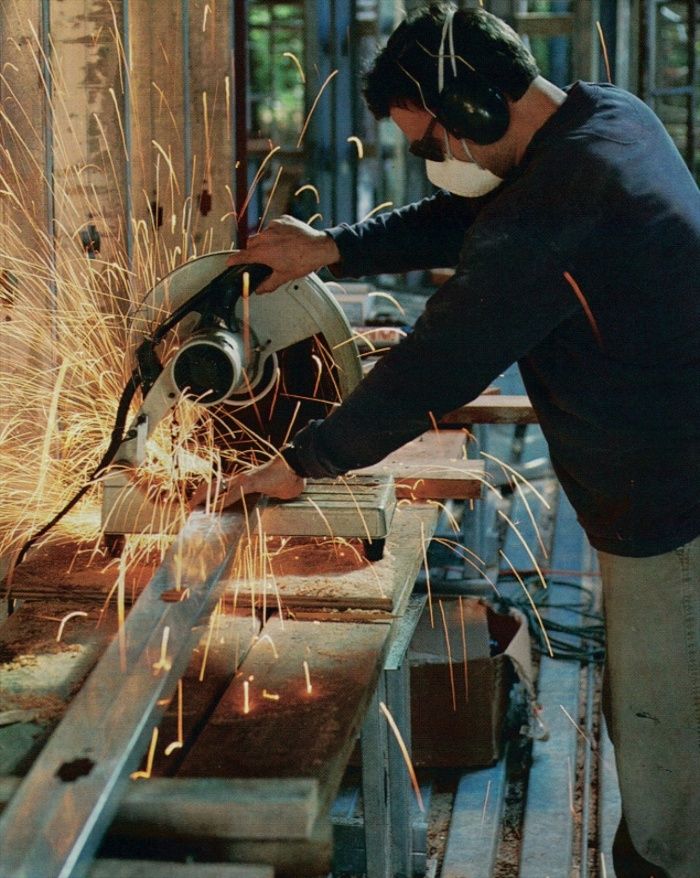Can Steel Framing Be Used in High-Performance Houses?
Steel has plenty of advantages over dimensional lumber, but thermal bridging is a significant shortcoming.

Planning a new house in the New York-New Jersey area, Sal Lombardo is weighing the relative merits of several construction methods. And on a list that includes double-stud walls, structural insulated panels, and other high-performance options is one that’s bound to raise a few eyebrows: light-gauge steel framing.
Steel would seem to have plenty of benefits. Unlike dimensional lumber, it’s dependably straight and true. It’s light in weight, and priced competitively with wood. For framers used to wood, it will take some getting used to, but seasoned crews are fast and efficient, and off-cuts and other scraps are easy to recycle.
The problem is its conductivity: steel framing can transport a lot of heat in and out of a building. Thermal bridging is a far more significant problem with steel-framed buildings than it is with wood-framed structures.
Sal posed a question in the GreenBuildingAdvisor’s Q&A forum about whether there’s a way around this shortcoming that would let him take advantage of steel framing’s many benefits.
The general consensus was that steel’s versatility and recyclability gave it some advantage over wood, but that builders who choose to frame homes with steel need to pay close attention to insulation and air-sealing details to avoid thermal bridging and condensation issues.
Fine Homebuilding Recommended Products
Fine Homebuilding receives a commission for items purchased through links on this site, including Amazon Associates and other affiliate advertising programs.

Affordable IR Camera

8067 All-Weather Flashing Tape

Handy Heat Gun






View Comments
I'm not concerned.
A multitude of fire tests of wall assemblies has proven that there is no difference in the fire performance, whether the studs are lumber or light steel.
Fire samples have their surface temperatires monitored - so a wall made of 1/4" steel plate 'fails' rather quickly. The 'protected' face is not allowed to get hot enough to ignite stuff on that side of the wall. When you consider the brick-melting temperatures reached on the 'fire" side, that's no easy task.
Relevance? Heat transmission is proportional to the square of the temperature difference. In effect, it's 4x harder to hold back a 100 degree difference than a 50 degree difference.
For the fire tests, it was theorized that the steel really wasn't that great of a heat conductor simply because there was so littl of it - remember, the metal is maybe 1/64" thick, quite a bit thinner than a hacksaw blade.
Balance that with the extra REAL insulation that you can put in the wall, when your 'studs' are only 1/64" thick, rather than 1-1/2" thick .... and I think it balances out.
There are many ways to overcome the thermal bridging issue with steel framing. A perhaps more important problem to consider here is the decreased hygric buffer capacity of the building enclosure. Wood framing can safely store significant excess moisture when it becomes present in the building enclosure and then release it when drying conditions are favorable. Wood framing can store perhaps 10% of it's weight in excess moisture. Steel framing has no hygric buffer capacity so the amount of excess moisture that can be safely stored by the enclosure will be dramatically reduced. This becomes important WHEN water vapor enters the enclosure and temperatures within the enclosure are below dew point. A high hygric buffer capacity will safely store more water - making the water unavailable for mold and other un-invited guests. If steel framing is used, choose your thermal and vapor control technologies wisely.
I used to design light gauge steel structures for homes.
Advantages:
1. Termites don't eat it.
2. Structure can be much more straight.
3. Steel is more stable.
Disadvatages:
1. Higher costs, more mistakes while learning something new.
2. Subcontractors forced to deal with many new issues.
3. Thermal bridging can lead to higher energy costs, water condensation, and rust.
4. Much greater sound transfer.
My opinion: In most cases its not worth the trouble. The changes needed to overcome the disadvantages of steel add cost. That money could be spent on other ideas that would have greater benefits.
https://www.facebook.com/MountainHousePlans
Guys, you might be interested in checking out fine luxury homes by Brejnik Fine Homes (www.brejnik.ca). They build fine luxury houses. Brejnik team consists of qualified and trusted: Architects, Interior Designers, Appraisers / Lenders, Trades & Suppliers, Geo-technical engineers, Structural Engineers, Arborists, Landscape Architects, Pool & Water Feature Specialists.